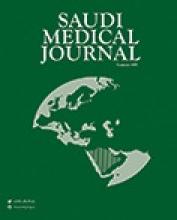Abstract
OBJECTIVE: To study the pattern and changes of lumbar intervertebral foraminal heights in an asymptomatic Jordanian sample relative to age, sex, level, and correlate values with midpoint vertebral and disc heights.
METHODS: One hundred and fifty-three patients (87 male and 66 female) were selected during the study period. The study was carried out at the Jordan University Hospital, Amman, Jordan from June 1999 to June 2000. Parasagittal magnetic resonance images were used to measure intervertebral foraminal heights at all lumbar levels. Values were statistically analyzed and the significance of differences in the means of foraminal heights at different levels in every age group and among age groups was determined. Foraminal height indices and correlation coefficients with midpoint vertebral and disc heights were calculated.
RESULTS: The study revealed that the mean foraminal height measured is 20.9 mm ± 1.7 with a range of 17.1-24 mm. Foraminal heights increased significantly in a craniocaudal pattern reaching a maximum at lumber (L)2/3 in females and at L3/4 in males followed by continuous significant decrease reaching their minimum at L5/sacral (S) 1. In relation to age, foraminal heights decreased significantly in females reaching their minimum in the 7th decade. In males, foraminal heights at L3/4 until L5/S1 increased significantly reaching their maximum in the 5th decade followed by significant decrease reaching their minimum in the 7th decade. Foraminal height indices remained relatively constant. A fair degree of correlation of foraminal heights with intervertebral disc heights and vertebral body heights was evident.
CONCLUSION: Foraminal heights show different level and age-dependent characteristic pattern of change between asymptomatic males and females. Changes of foraminal heights seem to directly reflect changes of vertebral body heights. These changes are considered normal age-dependent changes, and are discussed under consideration of adaptation to physical activity and changing hormonal levels.
- Copyright: © Saudi Medical Journal
This is an open-access article distributed under the terms of the Creative Commons Attribution-Noncommercial-Share Alike 3.0 Unported, which permits unrestricted use, distribution, and reproduction in any medium, provided the original work is properly cited.






